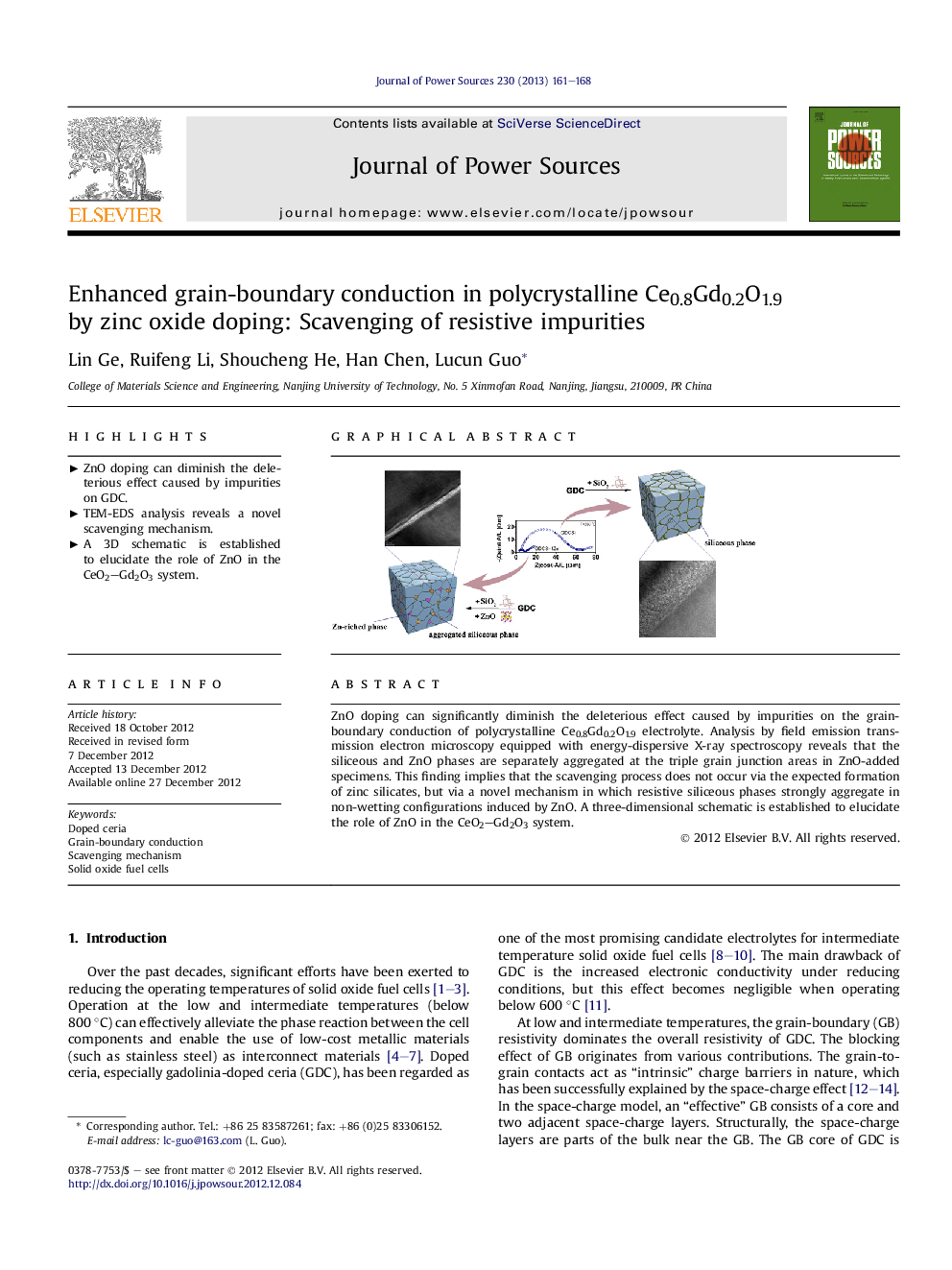| Article ID | Journal | Published Year | Pages | File Type |
|---|---|---|---|---|
| 1288065 | Journal of Power Sources | 2013 | 8 Pages |
ZnO doping can significantly diminish the deleterious effect caused by impurities on the grain-boundary conduction of polycrystalline Ce0.8Gd0.2O1.9 electrolyte. Analysis by field emission transmission electron microscopy equipped with energy-dispersive X-ray spectroscopy reveals that the siliceous and ZnO phases are separately aggregated at the triple grain junction areas in ZnO-added specimens. This finding implies that the scavenging process does not occur via the expected formation of zinc silicates, but via a novel mechanism in which resistive siliceous phases strongly aggregate in non-wetting configurations induced by ZnO. A three-dimensional schematic is established to elucidate the role of ZnO in the CeO2–Gd2O3 system.
Graphical abstractFigure optionsDownload full-size imageDownload as PowerPoint slideHighlights► ZnO doping can diminish the deleterious effect caused by impurities on GDC. ► TEM-EDS analysis reveals a novel scavenging mechanism. ► A 3D schematic is established to elucidate the role of ZnO in the CeO2–Gd2O3 system.
